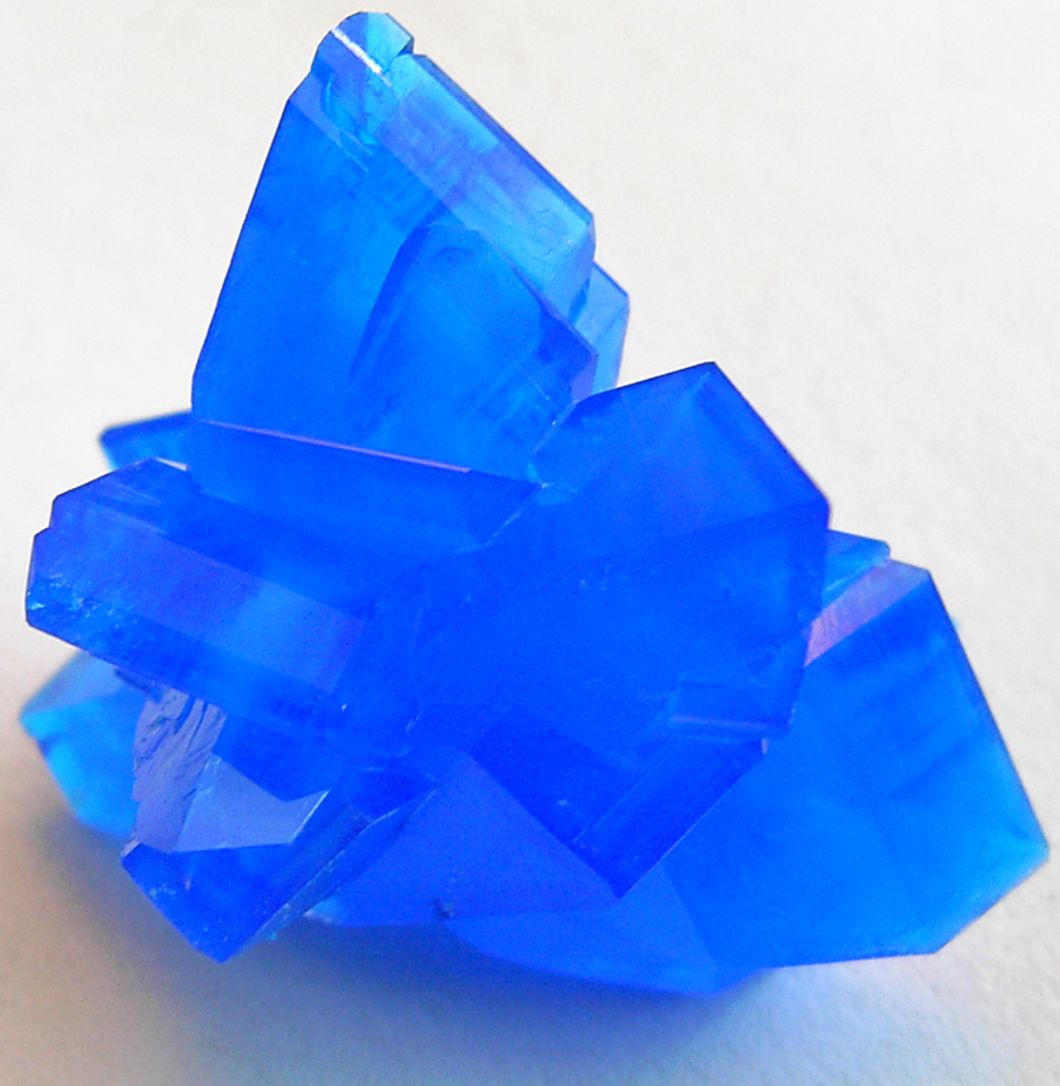As a chemistry major, I can tell you that chemistry is frustrating. There are a lot of facts, figures, concepts, and trick questions that make you want to pull your hair out. However, sometimes chemistry yields things that, while hazardous, are extremely beautiful or pleasing to the eye. For example, take a dirty or dull piece of a magnesium metal strip and dip it into 1.0 M nitric acid. It cleans the metal and turns it to a bright, shiny metal piece. It also bubbles while it reacts and cleans it, which can trigger an ASMR response. That being said, chemistry also gave us Copper II Sulfate. As shown in the picture above, the blue looks like it's glowing. It's such a vibrant color, and an aqueous solution of Copper II Sulfate looks just as good as it's solid counterpart.
As you go down in concentration (M), the blue gets lighter and lighter until it is finally colorless. While the lesser concentrations are also pretty, they pale in comparison to the 1.0 M Copper II Sulfate (literally). Yet, why is Copper II Sulfate blue? It turns out that the solution's ions absorb light in the red region of the color spectrum, which leaves it looking close to a can color.
"If white light (ordinary sunlight, for example) passes through copper(II) sulfate solution, some wavelengths in the light are absorbed by the solution. Copper(II) ions in solution absorb light in the red region of the spectrum. The light which passes through the solution and out the other side will have all the colors in it except for the red. We see this mixture of wavelengths as pale blue (cyan)" (Clark, Jim, "THE COLOURS OF COMPLEX METAL IONS".
Therefore, after the ions do their job, we are left with that beautiful hue of blue. However, not only does it look dazzling, but it also is used for a ton of products that we see every day. For example, it is used to help color cement for swimming pools. It also colors ceramic and glass and makes a great insecticide and fungicide. This is only a handful of what the compound is used for, as copper II sulfate is as amazingly colored as it is versatile. However, this compound is hazardous by itself, so don't eat it or try to inhale it. Also, wash your hands and eyes if it comes into contact with them. After all, you need your eyes to be able to look at the real Hope Diamond.



















